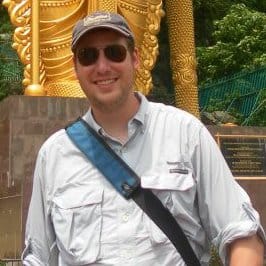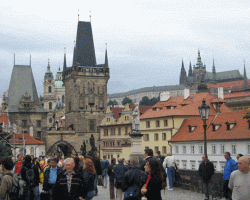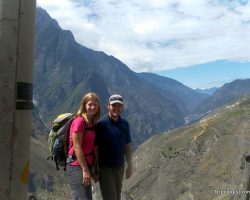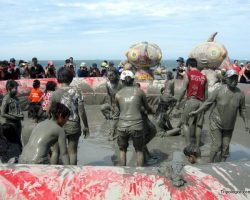Korea is known as a country with many great festivals. From cherry blossoms, to mud, to beautiful lanterns, there are festivals for nearly everything. In my opinion though, one of the best festivals in Korea, and certainly the best festival outside of Seoul, is the Andong Mask Festival.
Held every year over the last weekend in September and the first weekend in October, the Andong Mask Festival is a wonderful display of both Korean and international cultures. Showcasing many traditional and modern dances, all of these dances feature the use of masks in some form or another.
Things kick off in the morning with a myriad of shopping tents featuring local foods and crafts. There are also places for you to make various handicrafts yourself. One of the highlights when I went in 2011 was making my own Hanji paper lamp, just like the ones you see in Seoul’s Insadong. My wife also enjoyed putting together her own Hanji paper box. Both crafts were simple, inexpensive, and turned out quite nicely.
This year, the festival features not only displays of Hanji paper crafts, but also has exhibitions of international masks, stamps, water photos, and embroidery.
If you finish seeing everything at the main festival grounds, you can head out to the Hahoe Folk Village on the outskirts of the city. One of the best folk villages in the country, Hahoe is decked our during the festival and features stages showcasing mask dances and other cultural performances.
Back at the main festival grounds, the highlight of the event is the the evening performances on the main stage. While all of the performances are great, the star of the show is the Byeolsingut Talnori Dance, which has been designated one of Korea’s Intangible Cultural Properties.
Despite being performed entirely in the Korean language and the performers wearing masks, it is quite simple to follow the story because the performers move so expressively. As the performers dance around the stage, it is amazing to think that you are watching a dance that has been performed for hundreds of years.
The main stage also features mask dances from other cultures. On the 2013 schedule, there are planned performances by troupes from Thailand, India, Israel, Malaysia, the Philippines and Taiwan.

When I went, I also enjoy the performance of the Bian Lian Dance. Originating in China, this dance features a performer who quickly switches the color of his mask, sometimes several times a minute. Bian Lian is an ancient dance from China that is passed down from generation to generation through the sons. The dance has been only recently taught to women as it was thought that they would leave the family through marriage and share the secret with others. Despite the secrecy, it is now possible to learn the secrets of the dance with a quick search online. Fortunately though, it doesn’t diminish the beauty and mysticism you are sure to experience while watching it.
Overall, I would highly recommend attending the Andong Mask Festival. In fact, I would go as far to say that it is the best cultural festival that Korea has to offer.
The 2013 Andong Mask Festival is being held from September 27 to October 6, 2013. You can find out more information by visiting the festival’s website.
Getting to the 2013 Andong Mask Festival
The festival is located in Andong, which is around three hours from Seoul. Buses can be caught from either the Express Bus Terminal or East Seoul Bus Terminal in Seoul, as well as from many larger cities around the country. If you are coming from a smaller town, catch a bus to Daegu, and then transfer to a bus continuing on to Andong.
From the bus station, which is a good distance outside of town, it is best to catch a taxi to the festival grounds.
There are night buses that return to Seoul, making it possible to see the evening performances and then hopping on a late bus back to the capital. There are also plenty of Korean-style hotel rooms available in the city should you decide to stay the night.

Jim Cheney is the creator of Tripologist.com. Having traveled extensively in North America, Europe, and Asia, Jim enjoys sharing his love of travel and some of his favorite places to visit around the world. He lives in Pennsylvania, USA, with his wife and two kids.





